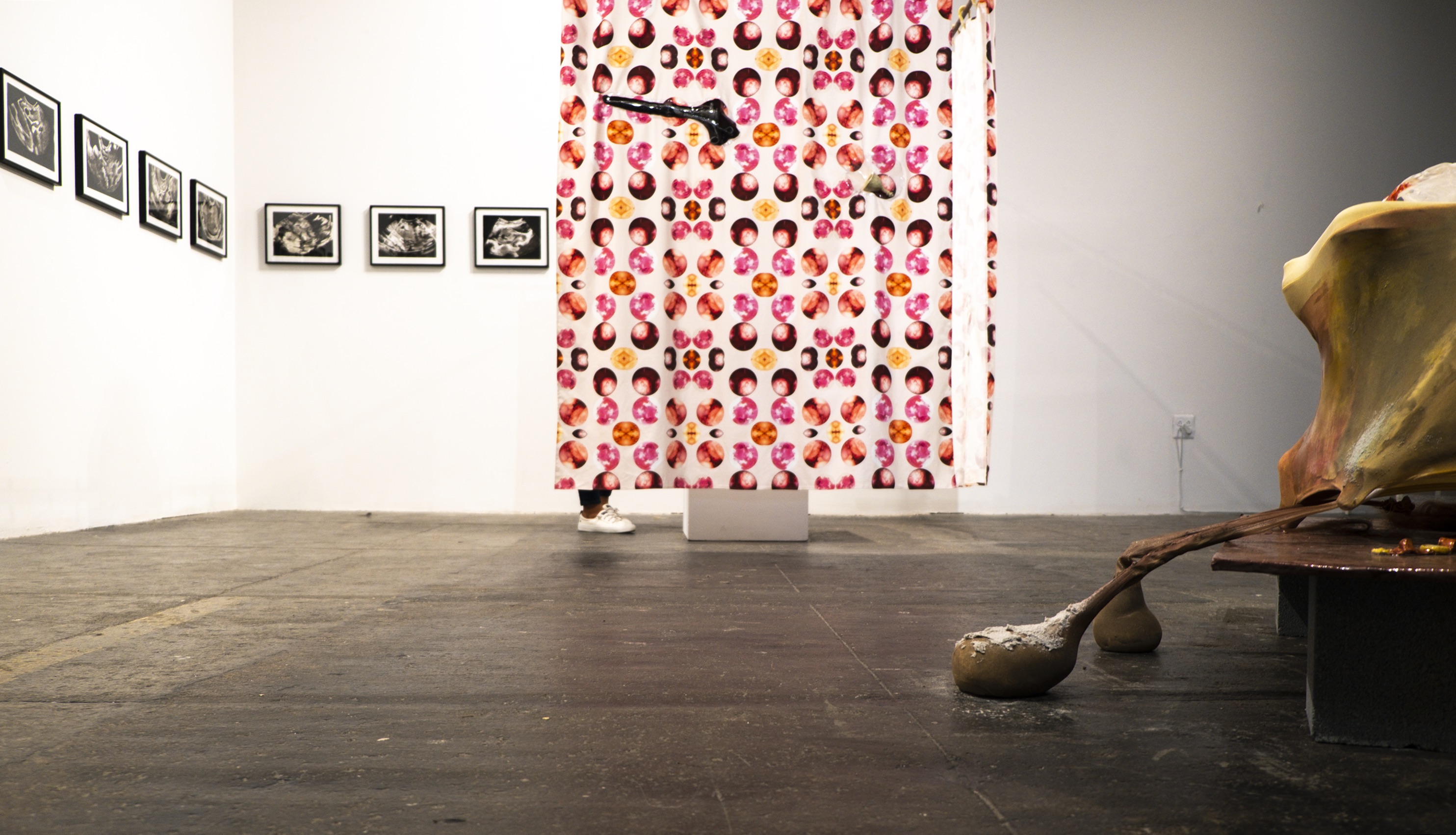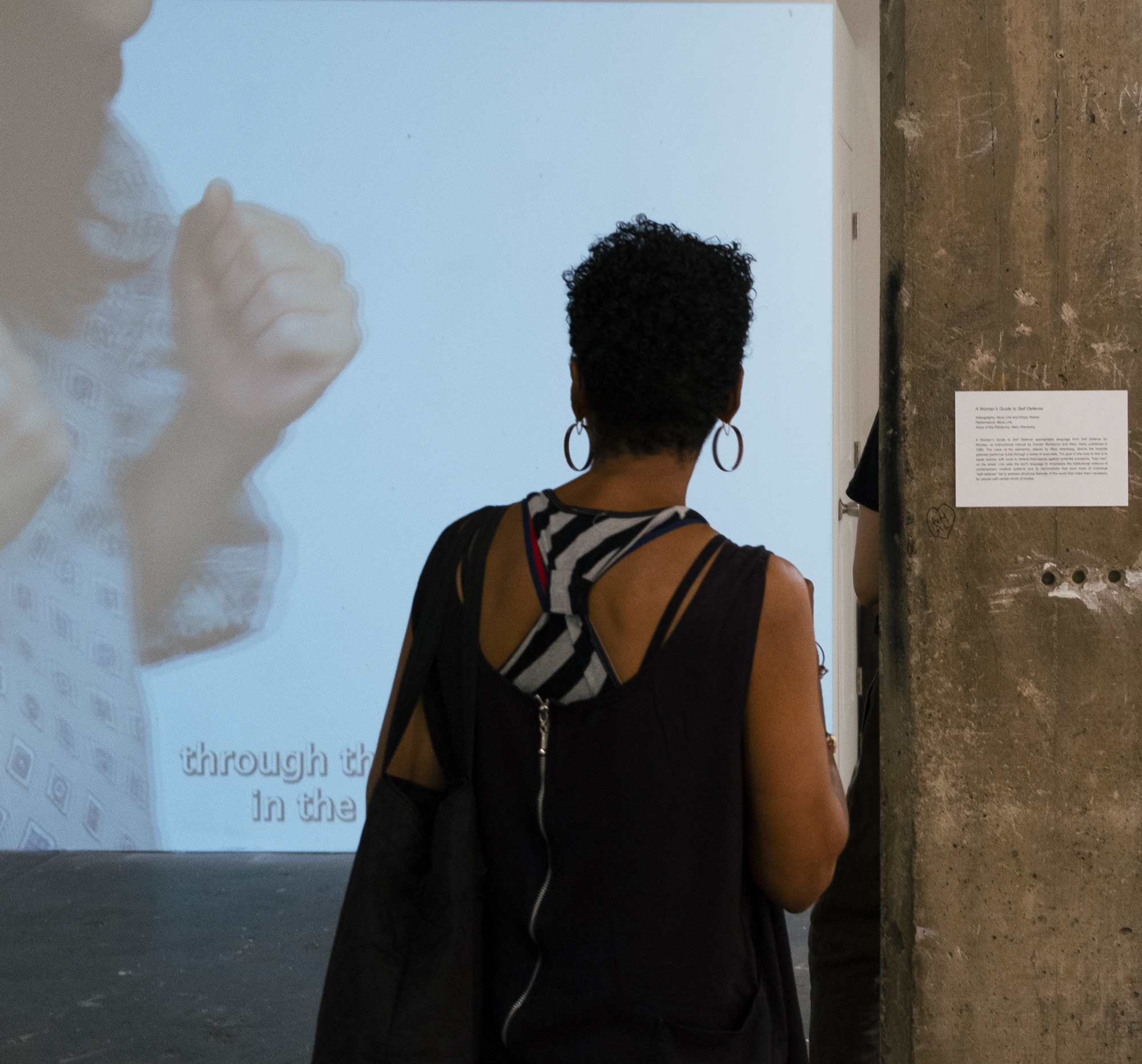
Inflamed nipple tips, forms encrusted with pain and other sediments of living, the enervating discomforts of being in a body in need of care: In her objects, ink drawings, and video piece, Alicia Link searingly probes the struggle for reproductive rights and basic health care that femme, gender nonconforming, and transgender people find themselves in, one year after the overturning of Roe v. Wade.
In 2022, Link began attempting to address the debilitating pain she was experiencing due to a medical issue. As she reflects on her recent efforts to navigate our increasingly stymied and invasive medical system, she conjures organs and other deeply interior spaces of the body, turning them inside out where their raw surfaces may breathe against the air, and she places them into the everyday liminal space of the doctor’s waiting room. Gynecological tools and devices are hermetically sealed into hospital cubicle curtains that are patterned with images from the artist’s own hysteroscopy. Standing in for the sinister and ever-mercurial Billing Department, a grubby sculpted phone rests indefinitely off the hook.
As Link’s forms wait, and wait, they seem to be in a state of transmutation. They are on the verge. They fester, curdle, seethe. Some of the forms sprout legs, though these newfangled limbs look unable to bear weight or to get up and carry their beings away from this place. Their anger reminds us that interventions for pain and life-threatening medical events cannot wait. Their nterminable patience asks for action.
curation, documentation, and text by Addison Namnoum


A Woman's Guide to Self Defense from Alicia Link on Vimeo.
Video 10:13
Videography: Alicia Link and Krissy Mahan
Performance: Alicia Link
Voice of the Patriarchy: Marc Attenberg
“A Woman's Guide to Self Defense,” appropriates language from Self Defense for Women, an instructional manual by Donald Monkerud and Mary Heiny published in 1980. The voice of the patriarchy, played by Marc Attenberg, directs the hospital gowned performer (Link) through a series of exercises. The goal of this how-to text is to equip women with tools to defend themselves against potential predators, “bad men” on the street. I use the text’s language to emphasize the institutional violence of contemporary medical systems and to demonstrate that such tools of individual “self-defense” fail to address structural features of the world that make them necessary for people with certain kinds of bodies.









